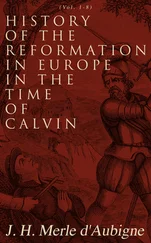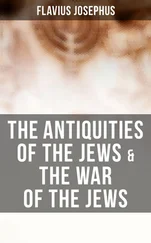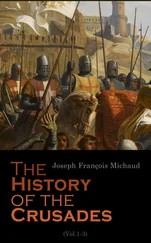Heinrich Graetz - History of the Jews, Vol. 3 (of 6)
Здесь есть возможность читать онлайн «Heinrich Graetz - History of the Jews, Vol. 3 (of 6)» — ознакомительный отрывок электронной книги совершенно бесплатно, а после прочтения отрывка купить полную версию. В некоторых случаях можно слушать аудио, скачать через торрент в формате fb2 и присутствует краткое содержание. Жанр: История, foreign_antique, foreign_prose, на английском языке. Описание произведения, (предисловие) а так же отзывы посетителей доступны на портале библиотеки ЛибКат.
- Название:History of the Jews, Vol. 3 (of 6)
- Автор:
- Жанр:
- Год:неизвестен
- ISBN:нет данных
- Рейтинг книги:3 / 5. Голосов: 1
-
Избранное:Добавить в избранное
- Отзывы:
-
Ваша оценка:
- 60
- 1
- 2
- 3
- 4
- 5
History of the Jews, Vol. 3 (of 6): краткое содержание, описание и аннотация
Предлагаем к чтению аннотацию, описание, краткое содержание или предисловие (зависит от того, что написал сам автор книги «History of the Jews, Vol. 3 (of 6)»). Если вы не нашли необходимую информацию о книге — напишите в комментариях, мы постараемся отыскать её.
History of the Jews, Vol. 3 (of 6) — читать онлайн ознакомительный отрывок
Ниже представлен текст книги, разбитый по страницам. Система сохранения места последней прочитанной страницы, позволяет с удобством читать онлайн бесплатно книгу «History of the Jews, Vol. 3 (of 6)», без необходимости каждый раз заново искать на чём Вы остановились. Поставьте закладку, и сможете в любой момент перейти на страницу, на которой закончили чтение.
Интервал:
Закладка:
But the disciples of the last Amoraïm had lost all creative power, and were unable to continue the development of the Talmud. The subject-matter and the method of teaching were both so fully defined that they were incapable of extension or of amplification. The stagnation in Talmudical development was more marked than ever before. The presidents of the academies were content to adhere to the ancient custom of assembling their disciples during the months of Adar (March) and Ellul (September), giving them lectures on the traditional lore and the methodology of the Talmud, and assigning to them themes for private study. At the utmost they settled, according to certain principles, many points of practice in the ritual, the civil law and the marriage code, which had until then remained undetermined, or concerning which there was a difference of opinion in the academies. Their purpose was to render the exhaustless material of the Talmud, which discussion and controversy had deprived of all definiteness, available for practical use. In order to prevent the decay of religious living, it was necessary that all doubt and uncertainty should cease; the judges stood in need of fixed principles by which to decide the cases brought before them, and all were ignorant of authoritative precepts by which to regulate their religious conduct. The establishing of the final rules for religious and legal practice after careful consideration of the arguments pro and con conferred upon the post-Amoraïc teachers the name of Sabureans (Saburaï). After the various opinions (Sebora) were reviewed, they were the ones that established the final, valid law. The activity of the Sabureans really began immediately after the completion of the Talmud, and Giza, Semuna and their associates merely worked along the same lines; their intention was to develop a practical code rather than the theory of the Law. They did not arrogate to themselves the authority to originate. First of all, Giza and Semuna, the presidents of the academies, engaged in the work of committing the Talmud to writing. They availed themselves partly of oral tradition, partly of written notes made by various persons as an aid to memory.
As everything which proceeded from the Amoraïc authorities appeared of importance to their successors, they gathered up every utterance, every anecdote which was current in learned circles, so that posterity might not be deprived of what they deemed to be the fulness of wisdom. They made additions for the purpose of explaining obscure passages. In this form, as edited by the Sabureans, the contemporary communities and posterity received the Talmud.
The era of the Sabureans witnessed the beginnings of an art without which the sacred writings had remained a sealed book, – the introduction of a system of vowel-points, by means of which the text of Holy Writ became intelligible to the unlearned. This art owes its origin to a faint breath of "scientific research" wafted from dying Greece. Justinian had closed the schools of philosophy in Greece, and the last of her wise men sought refuge in Persia. From them the science of grammar was communicated to the Syrian Christians, these in turn roused in their Jewish neighbors the spirit of emulation in the investigation of the Scriptures, and this led to the adoption of vowel-points and accents.
The names of the immediate successors of Giza and Semuna have been preserved neither by the chronicles nor by tradition; they were forgotten in the persecution with which the academies were again visited. In this century Magianism contended with Christianity for the palm of intolerance. Judaism was an abomination to both, and the priests of these two religions, of which the one preached the victory of light, and the other the rule of brotherly love, used weak kings as the instruments of horrible persecutions.
Chosroes Nushirvan's son, Hormisdas (Ormuz) IV, was unlike his great father in every respect. His tutor and counselor, Abuzurj-Mihir, the Persian Seneca, is said to have invented the game of chess for this weakly monarch, in order to teach him the dependence of the king on the army and the people. During this philosopher's lifetime the true character of Hormisdas was hidden, but immediately upon his retirement the Nero-like nature of the king broke out, and overstepped the bounds of prudence and moderation.
Led by the Magi, who attempted to arrest the approaching dissolution of their religion by persecuting the adherents of other beliefs, he vented his wrath upon the Jews and the Christians of his empire. The Talmudical academies in Sora and Pumbeditha were closed, and as under Firuz and Kobad, many of the teachers of the Law again emigrated (about 581). They settled in Firuz-Shabur (near Nahardea), which was governed by an Arabian chieftain, and was, therefore, less exposed to espionage. They continued their labors in Firuz-Shabur, and new academies arose in that town, the most distinguished being that of Mari.
Hormisdas' cruel reign, however, was of short duration; the Persians became dissatisfied and refractory, and the political enemies of Persia entered its territory, and possessed themselves of the country. The empire of the Sassanians would have become the prize of some successful invader, had it not been saved by the efforts of the brave general Bahram Tshubin. But when the foolish monarch went so far as to reward the deliverer of his country with ingratitude and to dismiss him, Bahram rose against the unworthy king, dethroned him, and threw him into prison, in which he was afterwards murdered (589). At first, for the sake of appearances, Bahram governed in the name of Prince Chosru, but soon he threw off all disguise and ascended the Persian throne. The Jews of Persia and Babylonia hailed Bahram as their deliverer. He was for them what the Emperor Julian had been for the Jews of the Roman empire two hundred years before; he put an end to their oppression and favored their endeavors. For this reason they espoused his cause with great devotion, assisted him with money and troops, and supported his tottering throne. Without the aid of the Jews, it is probable that he would have experienced great difficulty in retaining it for any length of time, for after some hesitation the Persian nation turned towards Chosru, the lawful heir to the throne. Only the army for the most part remained faithful to Bahram, and the Jews, doubtless, provided for the maintenance and the pay of the troops. The re-opening of the academies in Sora and Pumbeditha is undoubtedly to be attributed to the favor of Bahram in return for the devotion of the Persian Jews. Chanan of Iskia returned from Firuz-Shabur to Pumbeditha, and restored the ancient academic organization; it is also probable that the academy of Sora, which enjoyed by far the greater repute, elected a president at this time, although his name is not mentioned in the chronicles.
Bahram's rule was brought to a sudden end. The Byzantine emperor Mauritius, to whom the fugitive Prince Chosru had fled, sent an army to his aid, with which the loyal Persians united to make war upon Bahram. The Jews paid with their lives for their adherence to the usurper. At the capture of Machuza, a town containing a large Jewish population, the Persian general Mebodes put the greater part of the Jews to death. They probably fared no better in the other cities into which Chosru's victorious army penetrated. Bahram's army was vanquished, and he himself compelled to take refuge with the Huns. Chosru II, surnamed Firuz, ascended the throne of his ancestors. This prince, who was both just and humane, resembled his grandfather Nushirvan rather than Hormisdas, his father; he did not hold the Jews to account for their participation in the revolt. Throughout his long reign (590–628), the two academies enjoyed uninterrupted prosperity. Chanan was succeeded by Mari bar Mar, who had founded an academy in Firuz-Shabur, and the president of Sora during the same period was a teacher of similar name, Mar bar Huna (609 to about 620), during whose administration the fortunes of the Jews of Palestine alternated from victory to defeat. The successors of these teachers were Chaninaï in Pumbeditha and Chananya in Sora; they lived to see the victorious advance of the Arabs and the end of the Persian rule. The last of the Sassanian kings, of whom there were ten in the short period of twelve years, had no leisure to devote to the affairs of the Jewish population of their shattered empire; the Jewish community in Babylonia continued, therefore, to exist in its ancient order, with the Prince of the Captivity at its head. During the half-century that elapsed between the re-opening of the academies under Bahram and the Arab conquest of Persia (589–640), three Resh-Galutas are mentioned by name: Kafnaï, Chaninaï, and Bostanaï. The last of these belongs to the ensuing epoch, in which, aided by favorable circumstances, he succeeded in again investing the dignity of Prince of the Captivity with substantial power.
Читать дальшеИнтервал:
Закладка:
Похожие книги на «History of the Jews, Vol. 3 (of 6)»
Представляем Вашему вниманию похожие книги на «History of the Jews, Vol. 3 (of 6)» списком для выбора. Мы отобрали схожую по названию и смыслу литературу в надежде предоставить читателям больше вариантов отыскать новые, интересные, ещё непрочитанные произведения.
Обсуждение, отзывы о книге «History of the Jews, Vol. 3 (of 6)» и просто собственные мнения читателей. Оставьте ваши комментарии, напишите, что Вы думаете о произведении, его смысле или главных героях. Укажите что конкретно понравилось, а что нет, и почему Вы так считаете.












